Last year, WestJet made waves in the Canadian travel and aviation community when they put in an order for up to 20 state-of-the-art Boeing 787 aircraft, which would allow them to supplement their existing long-haul route network with additional flights to Asia, South America, and Europe. Today, their next big announcement has arrived, with Canada’s second largest airline officially unveiling their new product via Facebook Live and launching their new 787 Dreamliner mini-site.
The official video promoting the airline’s transformation can be viewed below:
New Seats & Interiors
Perhaps the most captivating bit of news we’re hearing from WestJet is the introduction of their new international business class product. Business class on the Boeing 787 will feature reverse herringbone lie-flat seats with all-aisle access, a storage console that offers ample surface space, touch-screen seat controls, in-seat power, and an 18” in-flight entertainment system.
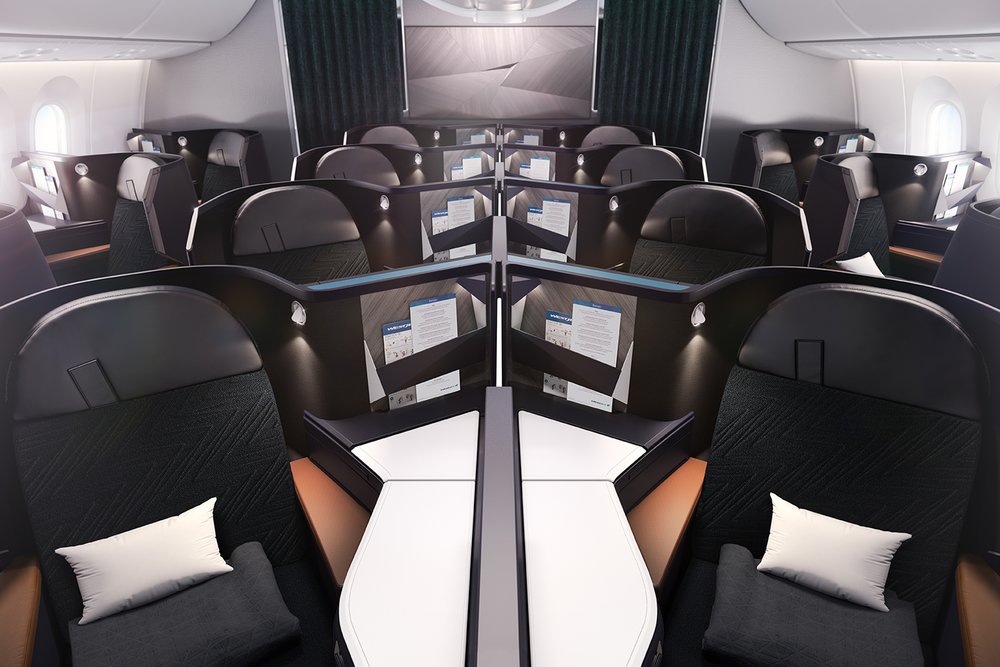
The cabin is decked out in dark colours with gold, silver, and teal accents, which I have to say looks quite stunning at first glance.
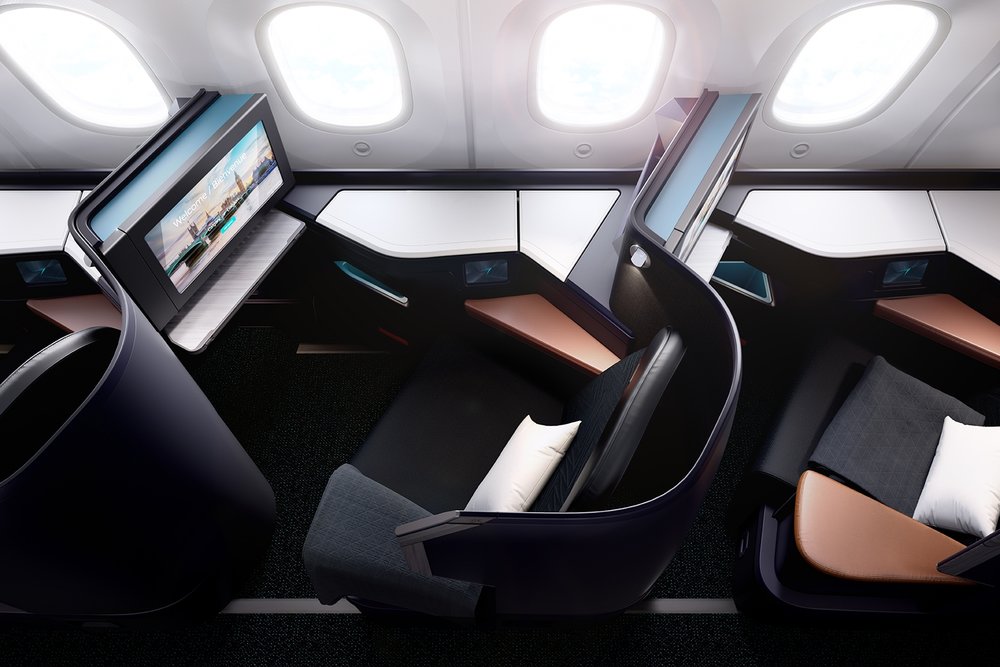
Drawing up a rough comparison with the analogous product of WestJet’s closest competitor, Air Canada, we see that the reverse herringbone seats are overall almost exactly the same. WestJet uses rounded seat shells while Air Canada’s are more angular, and of course the colour schemes are a point of differentiation.
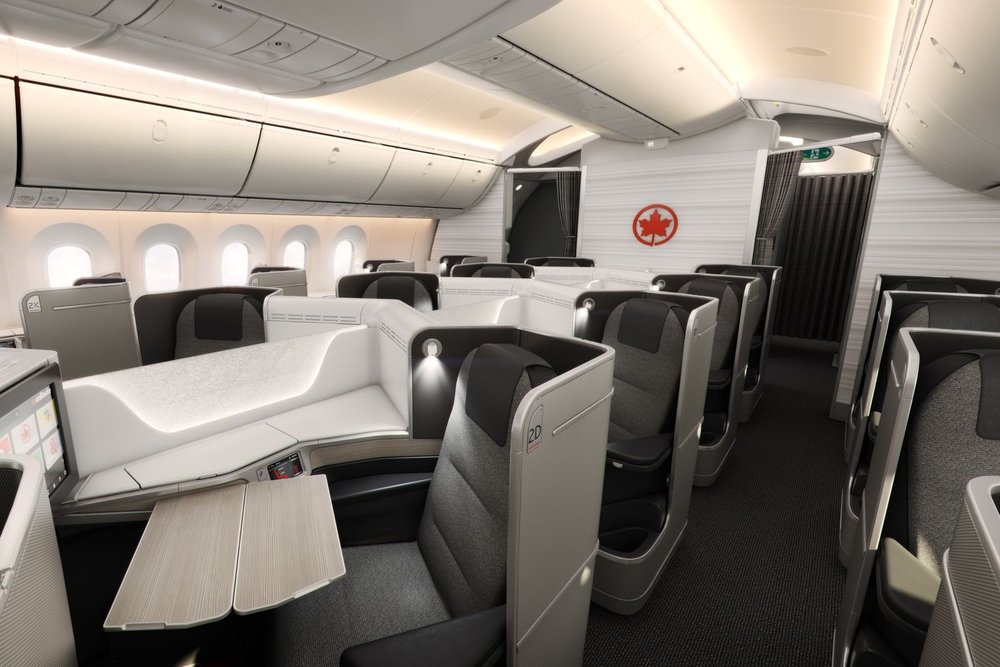
It makes sense that WestJet wanted to build upon the success that Air Canada’s 787s have witnessed, and at the end of the day, the reverse herringbone seat remains an industry-leading business class seat, so it’s more of an observation than a criticism. I just wonder whether having Rossen Dimitrov overseeing the development of the new seat – the same guy who oversaw the introduction of Qatar Airways’s revolutionary Qsuites – could’ve brought us something a little more cutting-edge.
In terms of the soft product, WestJet was quick to emphasize the service aspect of their all-new business class product as well, highlighting the fact that WestJet premium passengers will continue the enjoy the warm, friendly, and personalized service that WestJet is already known for. On-demand dining and turndown service will be part of the package as well, which I find a pleasant surprise – these are perks that many airlines choose to skip, simply because, for example, on-demand dining is more taxing for the crew than simply having a scheduled dinner service.
To me, the fact that WestJet is introducing such a premium level of in-flight services upon launch indicates that they’re in no two minds about stepping up from a low-cost carrier to a fully-fledged international airline, and I do hope that the rollout is successful.
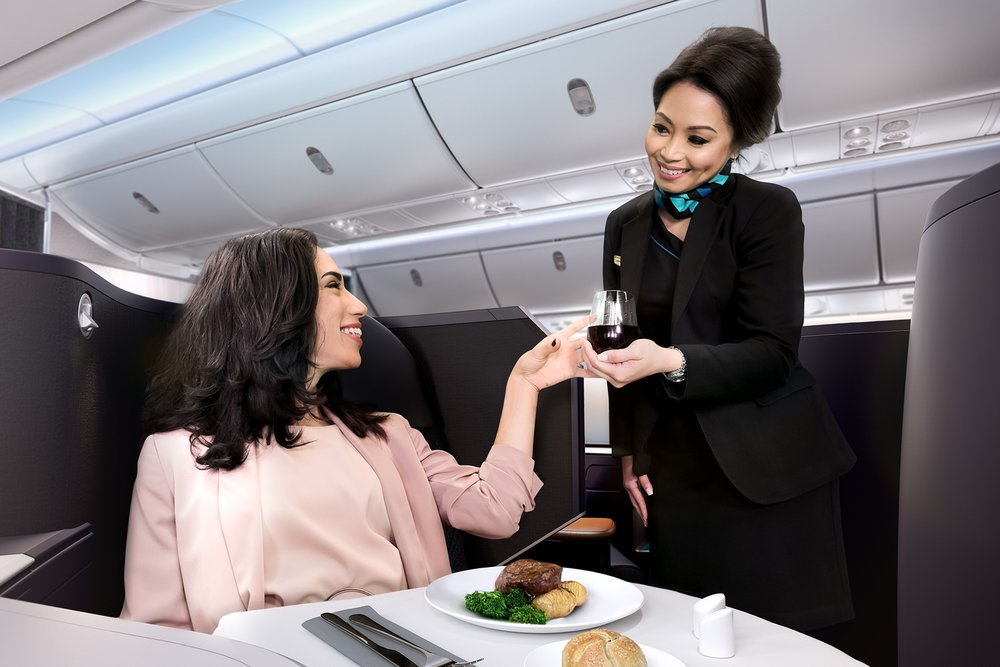
Meanwhile, the Boeing 787 will also feature premium economy class, which seeks to cater to the comfort-conscious leisure traveller and will offer a 2-3-2 seating arrangement and a self-serve social area with snacks and beverages. I definitely see how the social area plays into WestJet’s brand identity from a marketing perspective, but only time will tell if guests actually make use of it onboard or if it’s simply treated as another galley.
Economy class has a 3-3-3 seating configuration and offers in-seat power and entertainment at every seat, which is certainly an improvement upon some of WestJet’s existing planes. Of course, this being the 787, self-dimming windows with electronic controls will be available at every seat in place of window shades.
To be honest with you, it feels a little surreal looking at pictures and videos of competitive, crisp-looking seats onboard a WestJet plane. I’ve always associated WestJet with being a cheap, no-frills option for my travels and nowhere near the standard of a proper international carrier, and it’s clear that WestJet is setting out to alter perceptions in this new chapter for the airline.
New Branding & Livery
WestJet has also taken this opportunity to launch a new logo, livery, and design elements. Toronto design house Ove Brand Design oversaw the transformation, which sees the WestJet wordmark updated with a new font and colour scheme.
One change that caught my eye was the departure from the previous two-tone colour scheme that was used on the wordmark. By transitioning to a uniform colour and softening the emphasis on the word “West”, the airline is going for a bolder look while simultaneously letting the world know that their evolution – from a regional carrier based in Western Canada to a global one bringing Canada to the world – has begun.
The new livery looks awesome as well, with “The Spirit of Canada” and “L’esprit du Canada” emblazoned along the fuselage on either side of the aircraft. The tailfin logo also now fully incorporates the maple leaf design, showing off the airline’s home country when it’s parked in foreign lands.
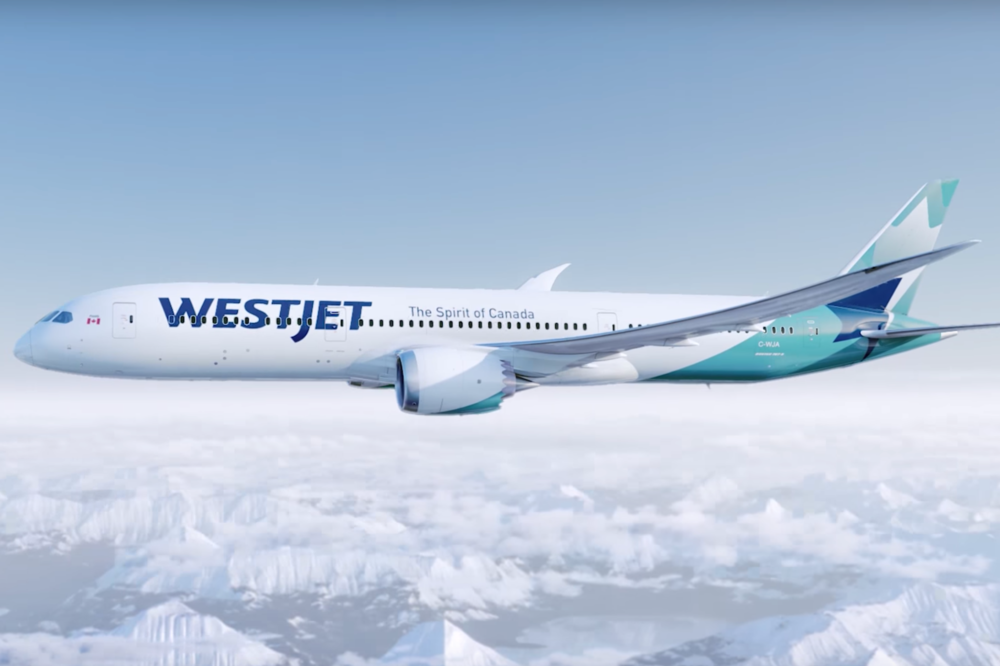
What’s Next for Canadian Travellers?
I have to say that I’m hugely excited for WestJet’s 787s to arrive. I think it’ll be a transformative step for the Canadian travelling public and for Canadian aviation in general.
WestJet is clearly angling to complete its transformation from its original roots of being a low-cost carrier to a fully-fledged mainline carrier and a worthwhile competitor to Air Canada. This is not a transition that you see happen very often, so major props will be due if they pull it off successfully.
Canadian travellers have long complained about the low quality and high cost of international air travel that results from having Air Canada as our the only mainline carrier that provides non-stop service to many markets (and that’s despite Air Canada being, all things considered, a very solid airline on paper). When WestJet takes delivery of their first 787s, we’ll start to see that status quo gradually being challenged.
If WestJet can bring a competitive product to the table and also engage in price competition with Air Canada, we’ll hopefully see a reduction in fares across the board. Of course, duopoly has its fair share of potential pitfalls as well, but overall should lead to a more consumer-friendly market than the virtual monopoly that Air Canada has enjoyed up until now.
As a global airline, where will WestJet fit in terms of airline alliances and partners? A quick look at some of their existing codeshare partners – Aeromexico, Delta, Air France/KLM, China Eastern, China Southern, and Korean Air – indicates that WestJet will be linking up closely with the SkyTeam airlines and might even be angling to join SkyTeam at some point.
That would be excellent news for Canadian travellers, allowing us to more easily participate in another global airline alliance after having been largely limited to Star Alliance during the days of Air Canada’s dominance. Joining an alliance should hopefully also mean we’d be able to fly WestJet’s new business class for great value by redeeming partner miles, such as Delta SkyMiles.
On that note, I’d be interested to see what happens to the WestJet Rewards program. Will it remain revenue-based, allowing you to earn WestJet Dollars (WSD) via the RBC World Elite MasterCard and redeem them at a 1:1 ratio towards the cash price of your flight? Or will some kind of award chart be put in place that allows for better-value redemption for their new business class? After unveiling a new aircraft worthy of a modern global carrier, I’m curious to see where WestJet will take its loyalty program and how they’ll use it to engage their customer base to full effect.
Lastly, it’s worth pointing out that WestJet isn’t fully abandoning its roots as a discount carrier, as it will continue to offer Canadians affordable no-frills travel via its subsidiary airline, Swoop. I just had a look at Swoop’s fares, and the fact that you can fly from the Greater Toronto Area to Metro Vancouver for $99, taxes and fees included, is pretty amazing and certainly fills a sizeable need for low-cost flights among the travelling public.
Conclusion
WestJet is seriously stepping up their game, and I’m looking forward to the announcement of which new routes will see the first Dreamliners being deployed. By the looks of it, WestJet’s long-haul business class strikes me as a very competitive product that should hopefully open up many more options for premium travellers in Canada, and I can’t wait to try it out. Meanwhile, having what was once our “backyard airline” taking up a spot on the global stage should bring significant improvements to the overall air travel landscape here in Canada.






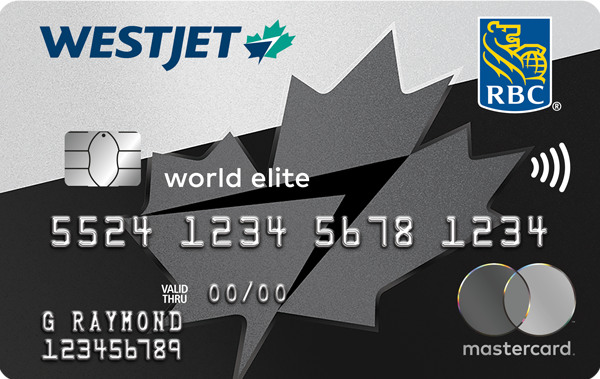





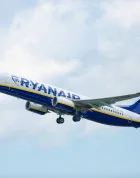




westjet already uses a reward chart – it’s just not officially published:
via – http://blog.rewardscanada.ca/2017/10/westjet-rewards-lowers-thats-right.html
As of October 11th the new lowest Member Exclusive rates for WestJet flights are as follows:
Canada Short haul: 99 WestJet dollars each way (198 round trip)
Canada Long Haul: 125 WestJet dollars each way (250 round trip)
Canada to Europe: 299 WestJet dollars each way (598 round trip)
Canada to South America: 329 each way (658 round trip)
Canada to Africa: 429 each way (858 round trip)
Canada to Japan or China: 549 each way (1,098 round trip)
Canada to Australia: 659 each way (1,308 round trip)
Thanks Zach, I recall you had gotten in touch with me on that. As I understand these would be subject to availability constraints similar to regular awards, right? Hopefully WestJet launches similar deals for a good price point when they announce their long-haul 787 routes with the new business class.
Huh. I assumed Westjet dollars were identical to regular dollars. I just got the RBC Avion with its 25,000 points, transferable to $250 Westjet dollars but figured that would buy me literally $250 towards a flight. According to the above, I can fly long haul within Canada for that?
Keep thinking that so the rest of us get the ME fares 😉
They did recently hire Jayce Loh, so I’m hoping this does mean upcoming positive changes in terms of their loyalty program.